Lying 68 nautical miles west of Key West, Florida, Dry Tortugas National Park is certainly not the easiest park to check off of your list. Visitors must spend hours on an island ferry, or take to the skies aboard a small seaplane to access this remote location.
Yet, for those who make the voyage to this remote archipelago, pristine tropical beauty, vacant white sand beaches, rich coral waters and historic tales await, in the lower 48’s most remote national park.
Guide to Dry Tortugas
Dry Tortugas National Park
The islands of Dry Tortugas National Park mark the southwestern terminus of a long island chain known as the Florida Keys.
Stretching southwestward from the Ragged Keys in Biscayne National Park, just off the shores of Miami, the Keys run for nearly 200 miles. These islands lie, as author and former N.P.S. Dry Tortugas ranger L. Wayne Landrum stated, “at the end of nowhere, but on the way to everywhere“.
The park is comprised of seven small sandy islands which together provide a mere 97 acres of dry land in a park of nearly 65,000 acres. The waters which surround the islands hold a vast array of wildlife that reside among rocky coral reefs and feed on a variety of seagrasses. Further from the shores, shallow reefs give way to a deep ocean world as depths quickly increase to more than 600 feet.
The Dry Tortugas are indeed, a land of contradiction. These remote islands have welcomed sailors, soldiers and prisoners of war, providing safe harbor for some, while dealing slow, cruel death to others.
Their waters have fed many a hungry explorer during the early days of nautical navigation, yet the lack of fresh water has punished those unfortunate enough to cast foot upon their shores while suffering from thirst.

They have witnessed the dreams of a growing nation bound to protect her borders, and they have punished those caught up in her most brutal war through an equally brutal imprisonment in horrid conditions.
Today however, these islands welcome curious travelers from around the world, who come to their turquoise shores in search of tropical relaxation and historical narratives.
This is Dry Tortugas National Park.
Garden Key
Fourteen-acre Garden Key is the centerpiece of the park, capped by the impressive and imposing Fort Jefferson. This massive brick structure is the first thing visitors see as they arrive by sea or plane and nearly covers the entire island upon which it rests.
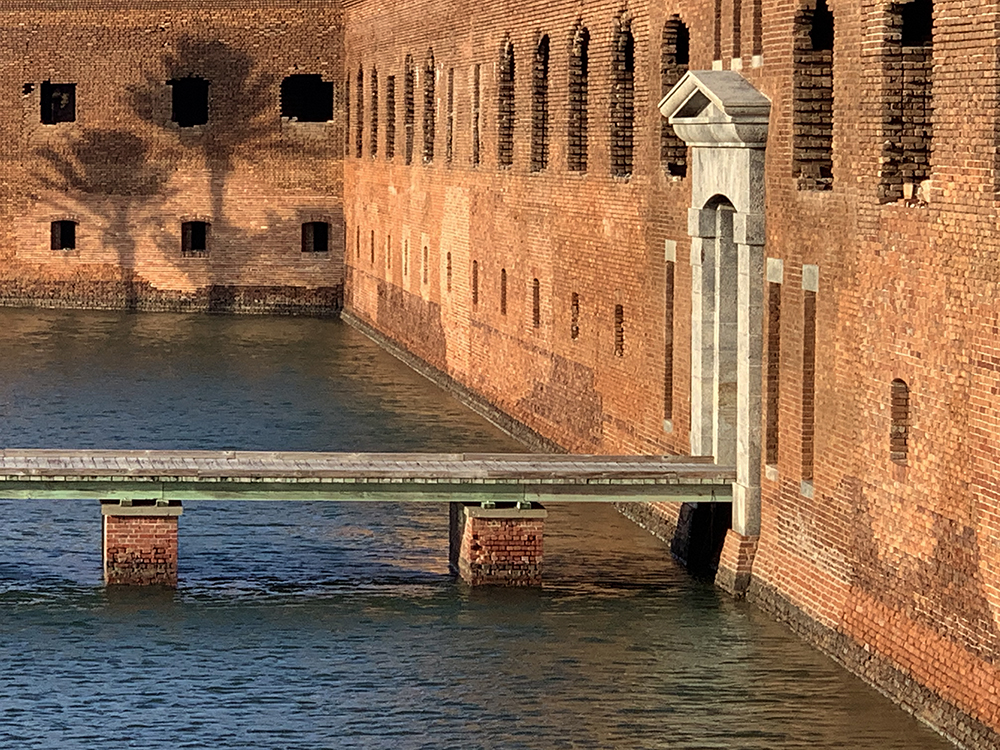
The park protects far more than just the fort. More than 46 square miles of surrounding waters are within park boundaries. These waters hold immaculate coral reefs that provide habitat for sea turtles (the park’s namesake), sharks and an array of exotic fish and other aquatic life.
Daily tours of the fort are available and Garden Key is home to a flurry of activity while the Yankee Freedom is at port. Seaplanes come and go throughout the day, bringing guests from around the world to marvel at the historic structure in its luxurious setting of turquoise waters.
Garden Key offers abundant opportunity for kayaking, swimming, and snorkeling and camping options exist for those who reserve well in advance. This is a regular port-of-call for any sailing vessel whose passage takes them anywhere close to the islands. For folks who enjoy scuba diving, numerous shipwrecks lie offshore and dive sites can be accessed by those with private watercraft.
Fort Jefferson
The park’s main attraction is Fort Jefferson, named for the third President of the United States, and author of the nation’s Declaration of Independence, Thomas Jefferson.
This imposing fortress is the third largest in the United States, a fact that becomes even more impressive when one considers that the two larger forts were built on solid land. Garden Key cannot accurately be described as “solid land”, in fact, the sheer weight of the fort has led to the partial sinking of the small island upon which it rests.
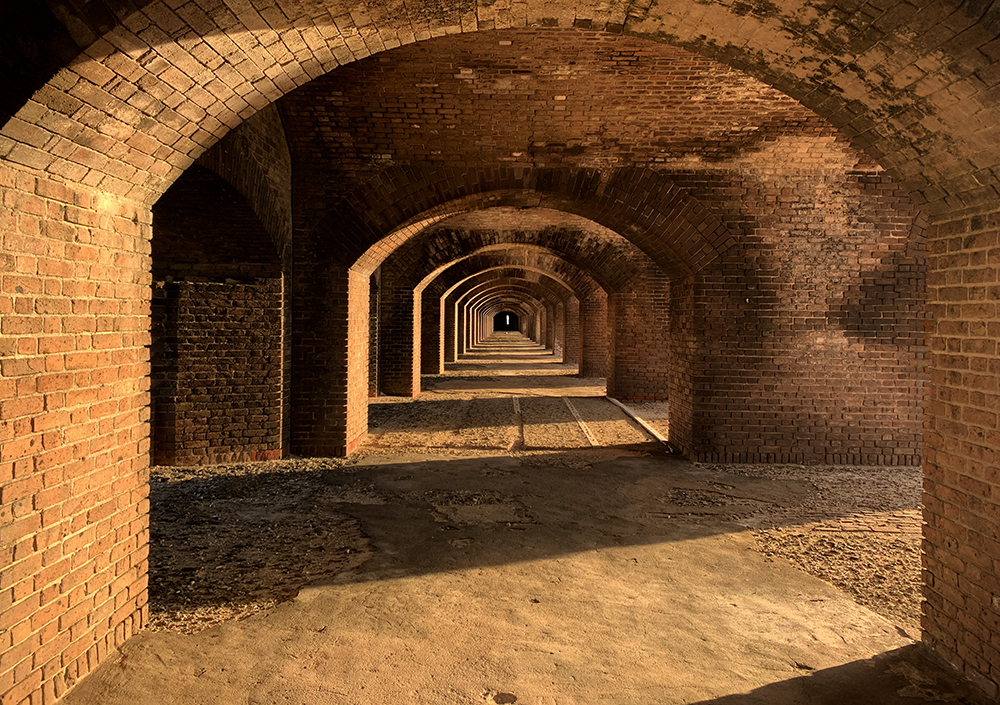
Fort Jefferson is the largest brick masonry structure in the western hemisphere, constructed of more than 16 million bricks and built to house some 420 cannons. It is a hexagonal design, surrounded by a moat that is 70′ wide. The fort contains more than 2,000 brick arches, and was built to house some 1,500 men.
The Dry Tortugas are named such in part, because there is no potable water to be found. Thus, the fort was constructed to house more than 100 cisterns that would capture the area’s estimated 30 inches of annual rainfall. In total, these cisterns could hold in excess of 1.5 million gallons of water.
The statistics and stories regarding the construction, firepower and wildly colorful history of this fort are staggering and can be soaked up during a tour of the massive former military outpost.
See the activities section for more information.
Bush Key
To the east of Garden Key is sixteen-acre Bush Key. If a visitor observes older photographs, it becomes apparent that they were once separate keys. Today however, they are connected by a sand bar which lends itself to relaxing morning walks to watch the sun rise for those camping just outside the fort.
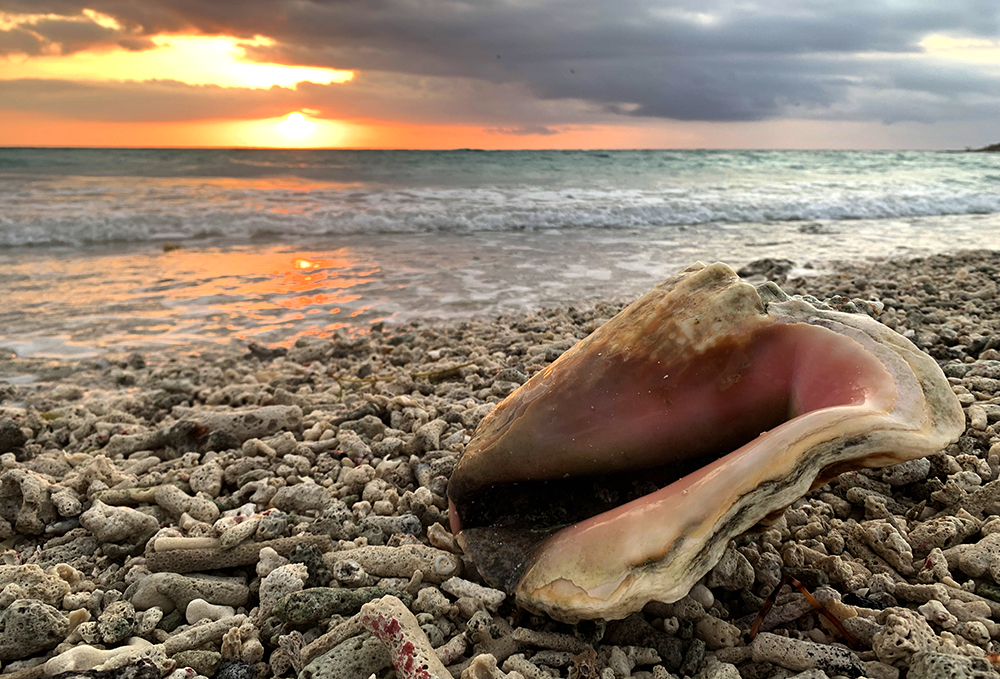
Bush Key is a bird sanctuary and is home to birds that are not found elsewhere in the continental United States. This small island is off limits to visitors during the months of February through September to provide a nesting ground for an estimated 80,000 sooty terns and 4,500 brown noddies who make nests on the islands.
During times when these winged residents are absent, visitors are welcome to investigate their homes and enjoy a stroll on the beautiful shores of Bush Key.
Loggerhead Key
Three miles to the west of Garden Key lies the elusive Loggerhead Key, and its 152-foot-tall lighthouse, which is easily visible from Fort Jefferson. At nearly 50 acres, Loggerhead Key is the largest of the islands that comprise Dry Tortugas National Park.
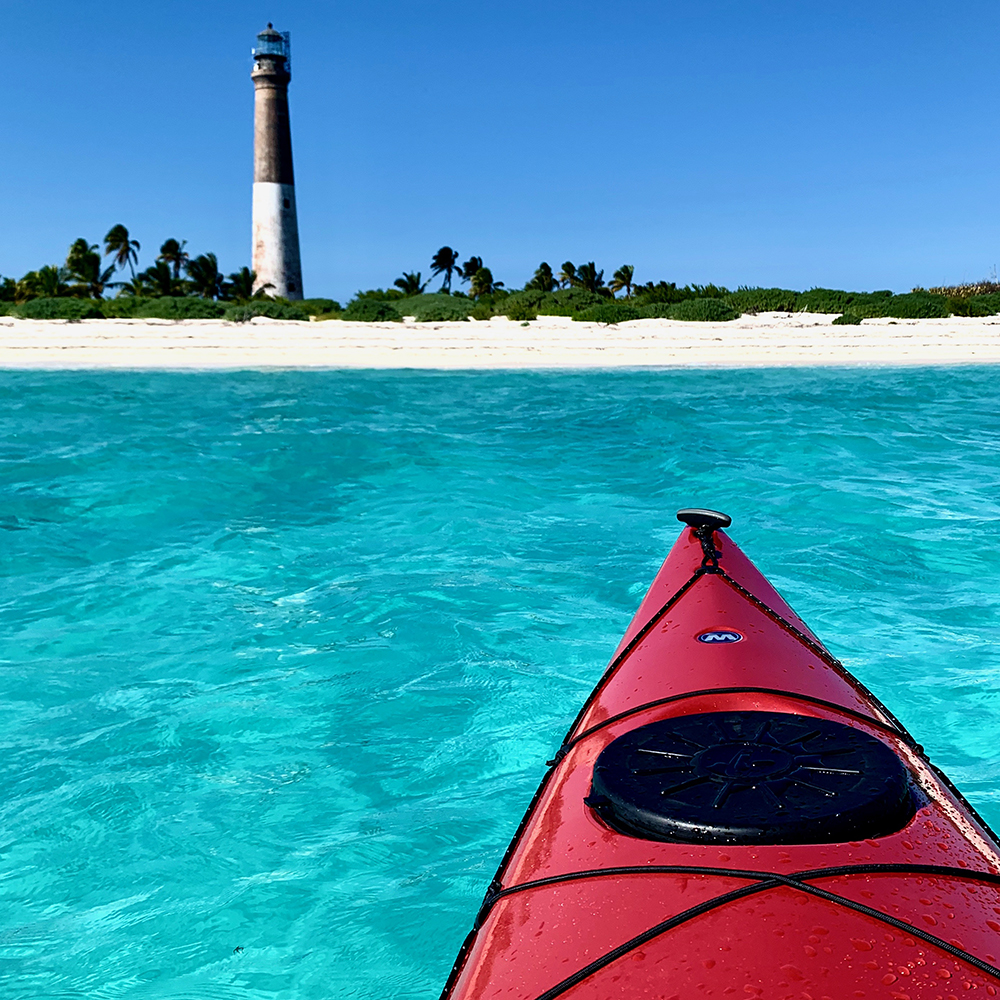
The island was named in reference to the abundance of loggerhead sea turtles which nest upon its shores, and has long stood as a refuge for wildlife. Today the island maintains a healthy habitat for a number of wildlife species.
The island is open to the public for day use only. Visitors are restricted to marked paths and all buildings and boat docks on the island are closed to the public. There is no public transportation to the island, but those with private watercraft may file a boat permit on Garden Key and gain access to the island.
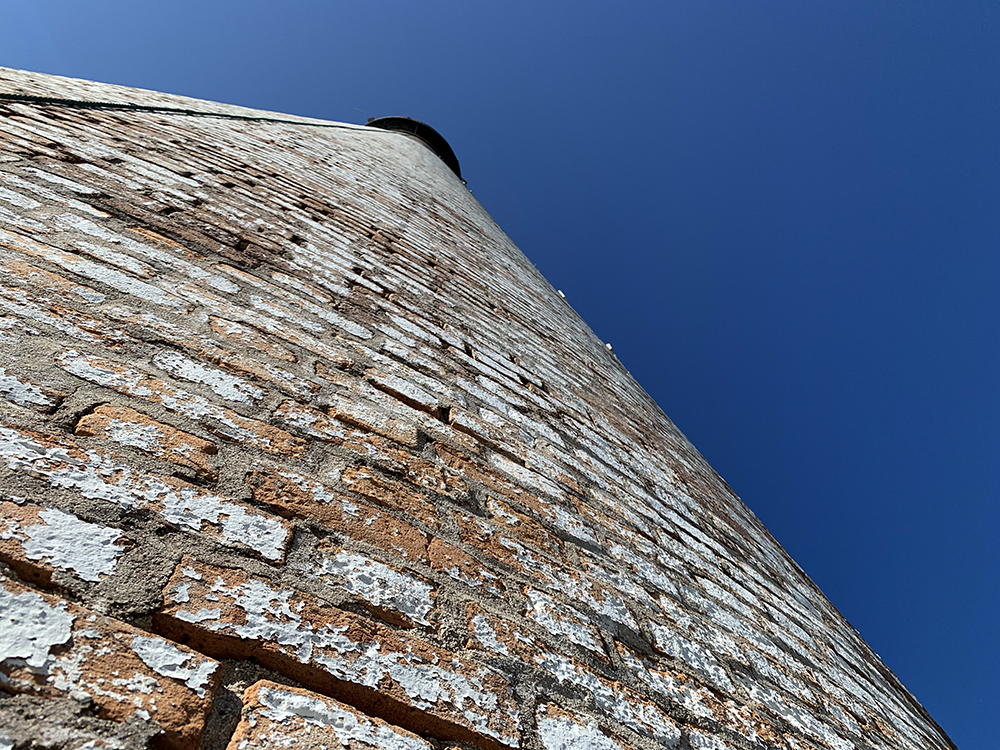
To the immediate west of Loggerhead Key lies the Little Africa Reef, so named because the reef’s shape resembles the African continent when viewed from the sky. This is home to the park’s most remarkable snorkeling opportunities.
See the activities page for more information.
When to Visit Dry Tortugas
Summers here are hot and humid, but not as many people head to the islands when it’s 90+ degrees and humid as hell, so the crowds are slightly less imposing. Summers here enjoy calmer waters too, so the snorkeling and kayaking can be better.
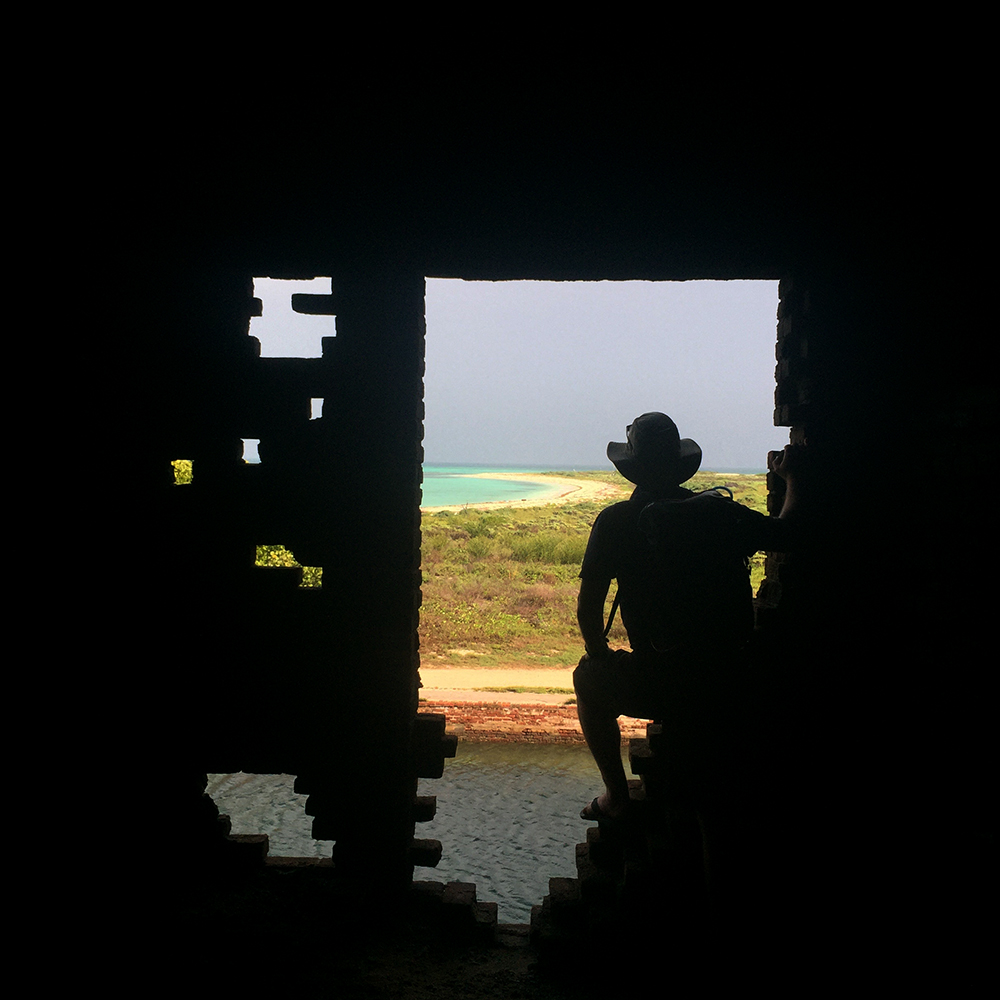
The winter season is full on, and this is the period during which most visitors make their way to the islands. Temperatures are perfect, often in the 60s and 70s with dry conditions the norm. However, the winters see rougher seas and high-strength winds can blow a careless hiker right off of the moat walk.
Getting to Dry Tortugas
You’ll want to plan a trip to the Dry Tortugas sooner rather than later. The ferry books up quickly and there are not a lot of options for getting to the park. See the visiting page for more information on getting to and from the Dry Tortugas.
Camping at Dry Tortugas
Camping here is a great way to enjoy some quality time on the island, because a day-trip to the island is simply not sufficient.
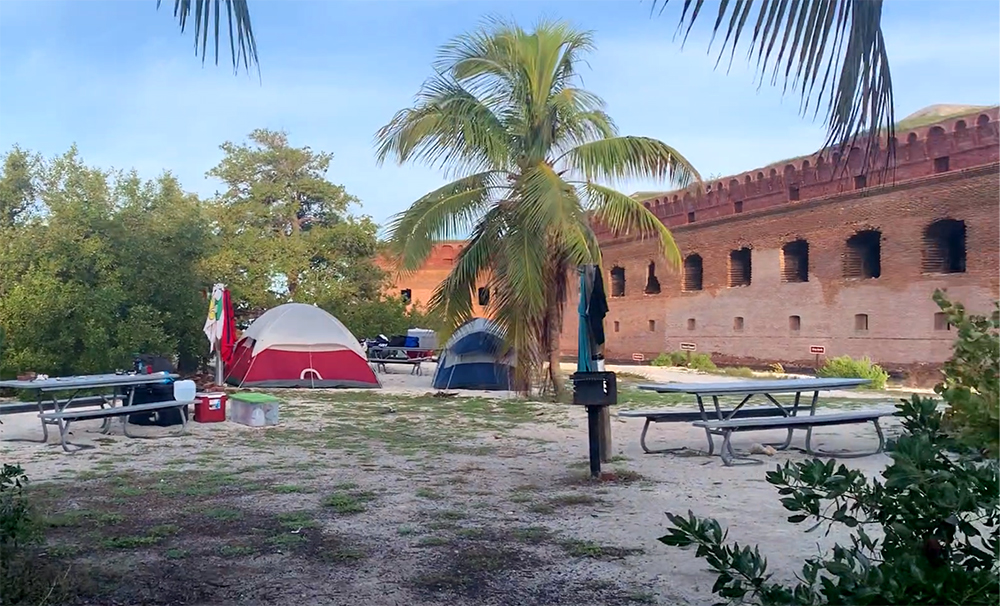
You’ll want to book such a trip well in advance, six months out is not unreasonable. This is a popular option and the Yankee Freedom (the ferry that transports guests to and from) limits the amount of campers that are allowed on each trip to the Dry Tortugas.
See the visiting page for a detailed report on camping at Dry Tortugas National Park.
Park Junkie Verdict
This is without a doubt, one of the more difficult national parks to visit in the lower 48, but for those that find their way to the gates of Dry Tortugas National Park, an unforgettable experience awaits…
My first visit was a one-day trip, which left me frustrated, as I really didn’t feel I had time to actually relax. For my second trip, I decided to camp for three days. This gave me plenty of time to relax and actually enjoy the island, while providing excellent opportunities for adventure as well.
I love the Dry Tortugas. It is one of our most unique national parks, and I’ll certainly be making another trip back out to these islands. Next time, I hope to find myself sailing to the Dry Tortugas!
See ya there…
Guide to Dry Tortugas
Relevant Links
National Park Guides

All content found on Park Junkie is meant solely for entertainment purposes and is the copyrighted property of Park Junkie Productions. Unauthorized reproduction is prohibited without the express written consent of Park Junkie Productions.
YOU CAN DIE. Activities pursued within National Park boundaries hold inherent dangers. You are solely responsible for your safety in the outdoors. Park Junkie accepts no responsibility for actions that result in inconveniences, injury or death.
This site is not affiliated with the National Park Service, or any particular park.
